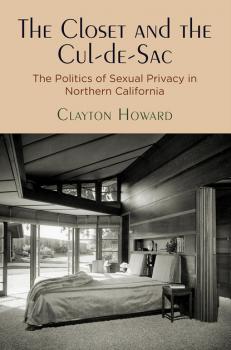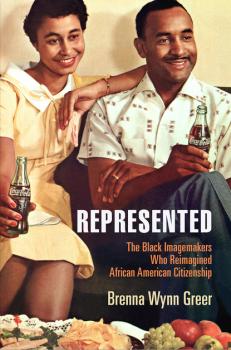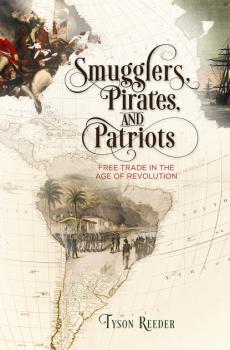ТОП просматриваемых книг сайта:
Историческая литература
Различные книги в жанре Историческая литература, доступные для чтения и скачиванияАннотация
The right to privacy is a pivotal concept in the culture wars that have galvanized American politics for the past several decades. It has become a rallying point for political issues ranging from abortion to gay liberation to sex education. Yet this notion of privacy originated not only from legal arguments, nor solely from political movements on the left or the right, but instead from ambivalent moderates who valued both personal freedom and the preservation of social norms. In The Closet and the Cul-de-Sac , Clayton Howard chronicles the rise of sexual privacy as a fulcrum of American cultural politics. Beginning in the 1940s, public officials pursued an agenda that both promoted heterosexuality and made sexual privacy one of the state's key promises to its citizens. The 1944 G.I. Bill, for example, excluded gay veterans and enfranchised married ones in its dispersal of housing benefits. At the same time, officials required secluded bedrooms in new suburban homes and created educational campaigns designed to teach children respect for parents' privacy. In the following decades, measures such as these helped to concentrate middle-class families in the suburbs and gay men and lesbians in cities. In the 1960s and 1970s, the gay rights movement invoked privacy to attack repressive antigay laws, while social conservatives criticized tolerance for LGBT people as an assault on their own privacy. Many self-identified moderates, however, used identical rhetoric to distance themselves from both the discriminatory language of the religious right and the perceived excesses of the gay freedom struggle. Using the Bay Area as a case study, Howard places these moderates at the center of postwar American politics and shows how the region's burgeoning suburbs reacted to increasing gay activism in San Francisco. The Closet and the Cul-de-Sac offers specific examples of the ways in which government policies shaped many Americans' attitudes about sexuality and privacy and the ways in which citizens mobilized to reshape them.
Информация о книге
Автор произведения Clayton Howard
Аннотация
In A Brotherhood of Liberty , Dennis Patrick Halpin shifts the focus of the black freedom struggle from the Deep South to argue that Baltimore is key to understanding the trajectory of civil rights in the late nineteenth and early twentieth centuries. In the 1870s and early 1880s, a dynamic group of black political leaders migrated to Baltimore from rural Virginia and Maryland. These activists, mostly former slaves who subsequently trained in the ministry, pushed Baltimore to fulfill Reconstruction's promise of racial equality. In doing so, they were part of a larger effort among African Americans to create new forms of black politics by founding churches, starting businesses, establishing community centers, and creating newspapers. Black Baltimoreans successfully challenged Jim Crow regulations on public transit, in the courts, in the voting booth, and on the streets of residential neighborhoods. They formed some of the nation's earliest civil rights organizations, including the United Mutual Brotherhood of Liberty, to define their own freedom in the period after the Civil War. Halpin shows how black Baltimoreans' successes prompted segregationists to reformulate their tactics. He examines how segregationists countered activists' victories by using Progressive Era concerns over urban order and corruption to criminalize and disenfranchise African Americans. Indeed, he argues the Progressive Era was crucial in establishing the racialized carceral state of the twentieth-century United States. Tracing the civil rights victories scored by black Baltimoreans that inspired activists throughout the nation and subsequent generations, A Brotherhood of Liberty highlights the strategies that can continue to be useful today, as well as the challenges that may be faced.
Информация о книге
Автор произведения Dennis Patrick Halpin
Аннотация
In 1948, Moss Kendrix, a former New Deal public relations officer, founded a highly successful, Washington, D.C.-based public relations firm, the flagship client of which was the Coca-Cola Company. As the first black pitchman for Coca-Cola, Kendrix found his way into the rarefied world of white corporate America. His personal phone book also included the names of countless black celebrities, such as bandleader Duke Ellington, singer-actress Pearl Bailey, and boxer Joe Louis, with whom he had built relationships in the course of developing marketing campaigns for his numerous federal and corporate clients. Kendrix, along with Ebony publisher John H. Johnson and Life photographer Gordon Parks, recognized that, in the image-saturated world of postwar America, media in all its forms held greater significance for defining American citizenship than ever before. For these imagemakers, the visual representation of African Americans as good citizens was good business. In Represented , Brenna Wynn Greer explores how black entrepreneurs produced magazines, photographs, and advertising that forged a close association between blackness and Americanness. In particular, they popularized conceptions of African Americans as enthusiastic consumers, a status essential to postwar citizenship claims. But their media creations were complicated: subject to marketplace dictates, they often relied on gender, class, and family stereotypes. Demand for such representations came not only from corporate and government clients to fuel mass consumerism and attract support for national efforts, such as the fight against fascism, but also from African Americans who sought depictions of blackness to counter racist ideas that undermined their rights and their national belonging as citizens. The story of how black capitalists made the market work for racial progress on their way to making money reminds us that the path to civil rights involved commercial endeavors as well as social and political activism.
Информация о книге
Автор произведения Brenna Wynn Greer
Аннотация
The «Latino vote» has become a mantra in political media, as journalists, pundits, and social scientists regularly weigh in on Latinos' loyalty to the Democratic Party and the significance of their electoral participation. But how and why did Latinos' liberal orientation take hold? What has this political inclination meant—and how has it unfolded—over time? In Latinos and the Liberal City , Eduardo Contreras addresses these questions, offering a bold, textured, and inclusive interpretation of the nature and character of Latino politics in America's shifting social and cultural landscape. Contreras argues that Latinos' political life and aspirations have been marked by diversity and contestation yet consistently influenced by the ideologies of liberalism and latinidad: while the principles of activist government, social reform, freedom, and progress sustained liberalism, latinidad came to rest on promoting unity and commonality among Latinos. Contreras centers this compelling narrative on San Francisco—America's liberal city par excellence—examining the role of its Latino communities in local politics from the 1930s to the 1970s. By the early twentieth century, San Francisco's residents of Latin American ancestry traced their heritage to nations including Mexico, Puerto Rico, Nicaragua, El Salvador, Chile, and Peru. These communities formed part of the New Deal coalition, defended workers' rights with gusto, and joined the crusade for racial equality decades before the 1960s. In the mid- to late postwar era, Latinos expanded claims for recognition and inclusion while participating in movements and campaigns for socioeconomic advancement, female autonomy, gay liberation, and rent control. Latinos and the Liberal City makes clear that the local public sphere nurtured Latinos' political subjectivities and that their politicization contributed to the vibrancy of San Francisco's political culture.
Информация о книге
Автор произведения Eduardo Contreras
Аннотация
From its origins in the 1750s, the white-led American abolitionist movement adhered to principles of «moral suasion» and nonviolent resistance as both religious tenet and political strategy. But by the 1850s, the population of enslaved Americans had increased exponentially, and such legislative efforts as the Fugitive Slave Act and the Supreme Court's 1857 ruling in the Dred Scott case effectively voided any rights black Americans held as enslaved or free people. As conditions deteriorated for African Americans, black abolitionist leaders embraced violence as the only means of shocking Northerners out of their apathy and instigating an antislavery war. In Force and Freedom , Kellie Carter Jackson provides the first historical analysis exclusively focused on the tactical use of violence among antebellum black activists. Through rousing public speeches, the bourgeoning black press, and the formation of militia groups, black abolitionist leaders mobilized their communities, compelled national action, and drew international attention. Drawing on the precedent and pathos of the American and Haitian Revolutions, African American abolitionists used violence as a political language and a means of provoking social change. Through tactical violence, argues Carter Jackson, black abolitionist leaders accomplished what white nonviolent abolitionists could not: creating the conditions that necessitated the Civil War. Force and Freedom takes readers beyond the honorable politics of moral suasion and the romanticism of the Underground Railroad and into an exploration of the agonizing decisions, strategies, and actions of the black abolitionists who, though lacking an official political voice, were nevertheless responsible for instigating monumental social and political change.
Информация о книге
Автор произведения Kellie Carter Jackson
Аннотация
In 1221, in what we now call Turkmenistan, a captive held by Mongol soldiers confessed that she had swallowed her pearls in order to safeguard them. She was immediately executed and eviscerated. On finding several pearls, Chinggis Qan (Genghis Khan) ordered that they cut open every slain person on the battlefield. Pearls, valued for aesthetic, economic, religious, and political reasons, were the ultimate luxury good of the Middle Ages, and the Chingissid imperium, the largest contiguous land empire in history, was their unmatched collector, promoter, and conveyor. Thomas T. Allsen examines the importance of pearls, as luxury good and political investment, in the Mongolian empire—from its origin in 1206, through its unprecedented expansion, to its division and decline in 1370—in order to track the varied cultural and commercial interactions between the northern steppes and the southern seas. Focusing first on the acquisition, display, redistribution, and political significance of pearls, Allsen shows how the very act of forming such a vast nomadic empire required the massive accumulation, management, and movement of prestige goods, and how this process brought into being new regimes of consumption on a continental scale. He argues that overland and seaborne trade flourished simultaneously, forming a dynamic exchange system that moved commodities from east to west and north to south, including an enormous quantity of pearls. Tracking the circulation of pearls across time, he highlights the importance of different modes of exchange—booty-taking, tributary relations, market mechanisms, and reciprocal gift-giving. He also sheds light on the ways in which Mongols' marketing strategies made use of not only myth and folklore but also maritime communications networks created by Indian-Buddhist and Muslim merchants skilled in cross-cultural commerce. In Allsen's analysis, pearls illuminate Mongolian exceptionalism in steppe history, the interconnections between overland and seaborne trade, recurrent patterns in the employment of luxury goods in the political cultures of empires, and the consequences of such goods for local and regional economies.
Аннотация
In Religion in the Public Square , James M. Patterson considers religious leaders who popularized theology through media campaigns designed to persuade the public. Ven. Fulton J. Sheen, Dr. Martin Luther King Jr., and Rev. Jerry Falwell differed profoundly on issues of theology and politics, but they shared an approach to public ministry that aimed directly at changing how Americans understood the nature and purpose of their country. From the 1930s through the 1950s, Sheen was an early adopter of paperbacks, radio, and television to condemn totalitarian ideologies and to defend American Catholicism against Protestant accusations of divided loyalty. During the 1950s and 1960s, King staged demonstrations and boycotts that drew the mass media to him. The attention provided him the platform to preach Christian love as a political foundation in direct opposition to white supremacy. Falwell started his own church, which he developed into a mass media empire. He then leveraged it during the late 1970s through the 1980s to influence the Republican Party by exhorting his audience to not only ally with religious conservatives around issues of abortion and the traditional family but also to vote accordingly. Sheen, King, and Falwell were so successful in popularizing their theological ideas that they won prestigious awards, had access to presidents, and witnessed the results of their labors. However, Patterson argues that Falwell's efforts broke with the longstanding refusal of religious public figures to participate directly in partisan affairs and thereby catalyzed the process of politicizing religion that undermined the Judeo-Christian consensus that formed the foundation of American politics.
Аннотация
Elizabeth and Henry Drinker of Philadelphia were no friends of the American Revolution. Yet neither were they its enemies. The Drinkers were a merchant family who, being Quakers and pacifists, shunned commitments to both the Revolutionaries and the British. They strove to endure the war uninvolved and unscathed. They failed. In 1777, the war came to Philadelphia when the city was taken and occupied by the British army. Aaron Sullivan explores the British occupation of Philadelphia, chronicling the experiences of a group of people who were pursued, pressured, and at times persecuted, not because they chose the wrong side of the Revolution but because they tried not to choose a side at all. For these people, the war was neither a glorious cause to be won nor an unnatural rebellion to be suppressed, but a dangerous and costly calamity to be navigated with care. Both the Patriots and the British referred to this group as «the disaffected,» perceiving correctly that their defining feature was less loyalty to than a lack of support for either side in the dispute, and denounced them as opportunistic, apathetic, or even treasonous. Sullivan shows how Revolutionary authorities embraced desperate measures in their quest to secure their own legitimacy, suppressing speech, controlling commerce, and mandating military service. In 1778, without the Patriots firing a shot, the king's army abandoned Philadelphia and the perceived threat from neutrals began to decline—as did the coercive and intolerant practices of the Revolutionary regime. By highlighting the perspectives of those wearied by and withdrawn from the conflict, The Disaffected reveals the consequences of a Revolutionary ideology that assumed the nation's people to be a united and homogenous front.
Аннотация
After emerging victorious from their revolution against the British Empire, many North Americans associated commercial freedom with independence and republicanism. Optimistic about the liberation movements sweeping Latin America, they were particularly eager to disrupt the Portuguese Empire. Anticipating the establishment of a Brazilian republic that they assumed would give them commercial preference, they aimed to aid Brazilian independence through contraband, plunder, and revolution. In contrast to the British Empire's reaction to the American Revolution, Lisbon officials liberalized imperial trade when revolutionary fervor threatened the Portuguese Empire in the 1780s and 1790s. In 1808, to save the empire from Napoleon's army, the Portuguese court relocated to Rio de Janeiro and opened Brazilian ports to foreign commerce. By 1822, the year Brazil declared independence, it had become the undisputed center of U.S. trade with the Portuguese Empire. However, by that point, Brazilians tended to associate freer trade with the consolidation of monarchical power and imperial strength, and, by the end of the 1820s, it was clear that Brazilians would retain a monarchy despite their independence. Smugglers, Pirates, and Patriots delineates the differences between the British and Portuguese empires as they struggled with revolutionary tumult. It reveals how those differences led to turbulent transnational exchanges between the United States and Brazil as merchants, smugglers, rogue officials, slave traders, and pirates sought to trade outside legal confines. Tyson Reeder argues that although U.S. traders had forged their commerce with Brazil convinced that they could secure republican trade partners there, they were instead forced to reconcile their vision of the Americas as a haven for republics with the reality of a monarchy residing in the hemisphere. He shows that as twilight fell on the Age of Revolution, Brazil and the United States became fellow slave powers rather than fellow republics.
Аннотация
In 2002, we learned that President George Washington had eight (and, later, nine) enslaved Africans in his house while he lived in Philadelphia from 1790 to 1797. The house was only one block from Independence Hall and, though torn down in 1832, it housed the enslaved men and women Washington brought to the city as well as serving as the country's first executive office building. Intense controversy erupted over what this newly resurfaced evidence of enslaved people in Philadelphia meant for the site that was next door to the new home for the Liberty Bell. How could slavery best be remembered and memorialized in the birthplace of American freedom? For Marc Howard Ross, this conflict raised a related and troubling question: why and how did slavery in the North fade from public consciousness to such a degree that most Americans have perceived it entirely as a «Southern problem»? Although slavery was institutionalized throughout the Northern as well as the Southern colonies and early states, the existence of slavery in the North and its significance for the region's economic development has rarely received public recognition. In Slavery in the North , Ross not only asks why enslavement disappeared from the North's collective memories but also how the dramatic recovery of these memories in recent decades should be understood. Ross undertakes an exploration of the history of Northern slavery, visiting sites such as the African Burial Ground in New York, Independence National Historical Park in Philadelphia, the ports of Rhode Island, old mansions in Massachusetts, prestigious universities, and rediscovered burying grounds. Inviting the reader to accompany him on his own journey of discovery, Ross recounts the processes by which Northerners had collectively forgotten 250 years of human bondage and the recent—and continuing—struggles over recovering, and commemorating, what it entailed.










